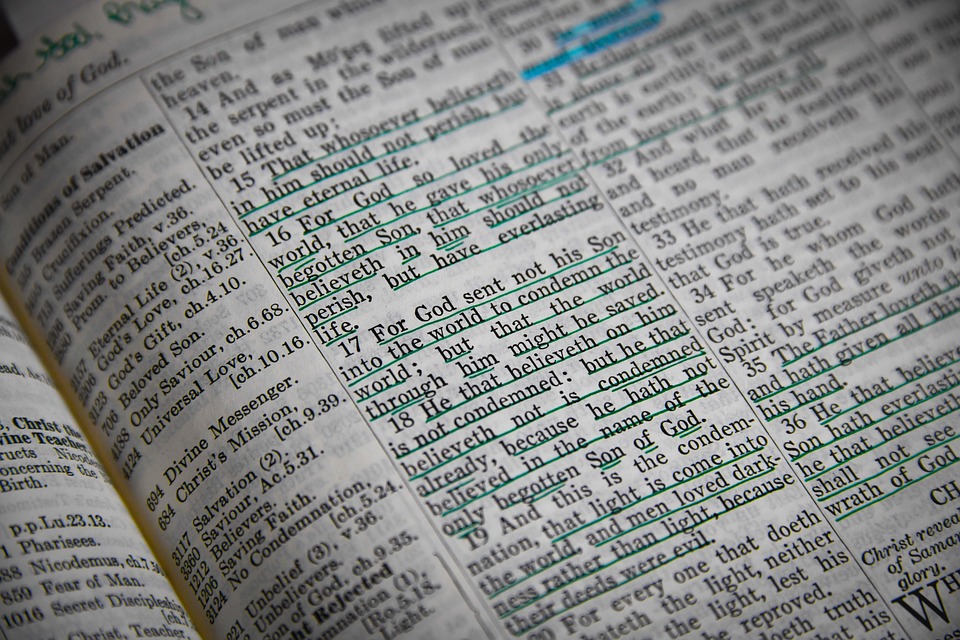When I was growing up, whenever we returned to school in the fall, my teachers would give us the assignment to “write about what you did over the summer.”
The entries always ended up being lists of events: “I played video games, and then we visited my grandma, and then I went to camp and went swimming and did archery and then…”
You probably had the same assignment.
Not exactly Pulitzer Prize-winning stuff.
Well, these days, since I’m an author and storyteller, I’m often asked to speak at schools. A number of years ago I was visiting an elementary school while doing a residency on writing. I arrived the day after spring break and told the students, “Please, please, please, do not tell me what you did over vacation. But can anyone tell me about something that went wrong?”
A fourth-grade boy raised his hand. “My cousin came over to my house, and we were having a contest to see who could jump the farthest off my bunk bed.”
“What happened?” I asked.
“He went first and got pretty far, and I said, ‘I can get farther than that!’” This boy was a natural storyteller, and by then, everyone in the class was leaning forward, waiting to hear how things played out.
“And what went wrong?” I said.
“I backed up to the wall to get a running start… and I jumped off the bed… and the ceiling fan was on. I got my head stuck in the ceiling fan, and it threw me against the wall—but I got farther!”
The class cracked up.
Now, if I would have said to those students, “Tell me about what you did over spring break,” that boy would’ve replied, “I played with my cousin.” But when I asked him to tell me what went wrong, he told me a story.
I call this the Ceiling Fan Principle. It’s easy to remember, and it’s a great place to begin a discussion on story and storytelling.
Here it is: You do not have a story until something goes wrong.
What is a Story?
At its core, when you strip everything away, what is a story? Do all stories, regardless of genre, share some characteristics?
Yes: a character in tension, caught between his present condition and his unmet desire for things to be different. A story is not simply a progression of events; it is a collision of desires. So, a better question to ask than, “What does this character do?” is “What does this character want?” And, rather than asking, “What happens?” ask, “What goes wrong?” Then you’ll be on your way closer to the heart of the story.
Stories are transformations unveiled—either the transformation of a character, a relationship, or a situation or, perhaps, all three.
Without a crisis, a struggle, a discovery, a transformation in the life of the main character or a revelation of what she is really like, it’s likely not a story. It’s a report.
______________
Characters making choices to resolve tension—that’s your plot. If your protagonist has no goal, makes no choices, or has no struggle to overcome, you have no plot.
______________
Understanding story in this way has revolutionized the way I read the Bible. Now, instead of looking at the story as a series of events, I look for the pursuit: What do the characters want? What is keeping them from getting it? How do they respond? What is their driving desire throughout the story? What is the discovery they make at the end?
I don’t look for the lesson as much as I look for the struggle, for what doesn’t fit, for what goes wrong, for the things that truly set the story into motion. This approach has really changed the way I understand the story God is telling the world.
Take for instance, the story about Jesus at the temple when he was twelve. When I looked for the struggle, I found a deeper truth than when I simply looked at the events that were occurring.
Was Jesus lost?
The story in Luke 2:39-52 seems pretty straightforward.
You probably know the story: Every year Mary and Joseph took Jesus to the Passover festival in Jerusalem. Then, the year Jesus turned twelve, they accidentally left him behind when they started on their trip back home to Nazareth. At first they thought maybe Jesus was with some of their friends or relatives in the caravan, but when he didn’t show up, they got worried and began to look for him.
Still unsuccessful, they returned to Jerusalem and spent several days in a frantic search until at last they found him conversing with the religious scholars at the temple. Mary was exasperated. “Son!” she cried. “Why have you done this to us? Your father and I have been frantic, searching for you everywhere” (Luke 2:48). But Jesus replied, “Why did you need to search? You should have known that I would be in my Father’s house” (Luke 2:49).
Luke closes the story by noting that neither Mary nor Joseph had any idea what Jesus was talking about, but that Jesus returned with them and was obedient to them, and his mother “stored all these things in her heart” (Luke 2:51).
Let’s take a closer look at the story.
Almost always, the person who struggles with something and then discovers something is the main character of a story. I used to think this story was primarily about Jesus, but then I noticed that he doesn’t really struggle with anything. He always knows what he’s doing, where he is, and why he’s there. That leaves his mom and his foster dad, Joseph, as possible main characters. And since Joseph has no lines in this story, I believe this is mainly a story about Mary. Already that’s different than what I learned in Sunday School.
Many of the best stories have both an external struggle (a problem that needs to be solved) and an internal struggle (a question that needs to be answered). You see it in movies and novels all the time: As the FBI agent diffuses the bomb he realizes how fragile life is and decides to reconcile with his dying father who he hasn’t spoken with since his divorce ten years earlier. Or, as Brenda finally lands the job she’s been trying desperately to get, suddenly it dawns on her that she really is in love with Edwin who is about to move to Wichita because he thinks she’s actually in love with Brent, the vacuum cleaner salesman…. You get the idea. External and internal struggles play off each other to add tension and depth to stories.
This story is no different. Mary’s external struggle is pretty clear—she can’t find her son. But what about an internal struggle? Is there a question she needs answered?
I think there is. And I think she reveals it in the words she says to Jesus: “Son! Why have you done this to us? Your father and I have been frantic, searching for you everywhere!” (Luke 2:48). She meant, of course, that she and Joseph had been searching for Jesus. But in truth Jesus’s real Father hadn’t been looking for him at all. Mary should have remembered her encounter with the angel and the miraculous, Spirit-induced conception of her boy. According to the Gospel writers, God himself, in a mystical and mysterious way, was Jesus’s Father. So, when Mary said, “Your father and I have been looking all over for you!” she showed her inner struggle—she’d started to think of Joseph as her son’s dad. She’d forgotten who Jesus really was and why he’d come to earth in the first place.
And by his reply, Jesus put a magnifying glass up to her struggle. “Why did you need to search? You should have known that I would be in my Father’s house” (Luke 2:49). He could have said, “You should have known that I’d be in the temple” or “back here in Jerusalem” or “learning about God” or something like that. But he didn’t. He said, “in my Father’s house.” And I don’t believe it was a coincidence. Jesus always chose his words carefully.
Mary forgot.
He was so normal, so human, so much like everyone else, that I think she forgot about his divine lineage and his ultimate purpose in life. She forgot he was God. If she had remembered his true identity she would have known immediately where to look for him and, mostly likely, she would not have referred to Joseph as Jesus’s dad.
(By the way, where is Joseph through all this? Well, quiet. In the background. Just taking it all in. I think he was a man of few words. As my pastor pointed out to me one time, “None of his words are recorded in the Bible. Anywhere. Typical guy.”)
So now, does Mary’s life change as a result of this encounter? I’d say so. She pondered the events in her heart, and through the rest of the Bible we never hear her referring to Joseph as Jesus’s father again. Ever.
Struggle. Discovery. Change.
The more I explored this story, the more I realized it really isn’t about Jesus being lost—he wasn’t lost at all. It’s a story about Mary being lost. He stayed behind in Jerusalem on purpose because his mom had gotten used to having him around. The mystery of his true identity had faded with the years as his baby teeth fell out and his voice began to change and his acne started flaring up. Just like any other boy. He was just so human she forgot who he really was.
So he stayed behind to remind her.
Tension is Key
At the heart of story is tension, and at the heart of tension is unmet desire. So, at its core, every story is about a character who wants something but cannot get it. As soon as he gets it (or fails ultimately in his quest to do so), the story is over. Because of this, if we don’t know what the character wants, they won’t know what the story is about.
Understanding the pursuit driven by unmet desire is the key to unlocking a story. Where does this quest take your characters (emotionally, spiritually, physically, mentally, or relationally)? That’s what matters.
A story is more than events; it is pursuit.
______________
Taking it deeper
Here are five sets of questions to lead you further into the heart of a Bible story. Remember the acronym C.A.R.D.S.:
Context: How do things make sense in a way that I hadn’t (or the story characters or audience hadn’t) expected? How does this story or event fit into the broader sweep of God’s story? Are there other scriptural verses or stories that will help inform my understanding of this one or shed new light on it?
Awareness: What surprises me? What have I never noticed before? What questions do I have?
Reflection: What don’t I know yet that would be helpful to know? Are there cultural or social aspects to the story that would help inform me on what’s happening or why it’s playing out as it is? How will I discover those?
Discovery: What do the characters discover? What meaningful choices do they make? What insights do they walk away with? What’s different at the end of the story for (or within) the characters?
Struggles: Who struggles? Remember: Every character enters every scene hoping for something. What do they hope for? What do they desire but aren’t able to achieve, avoid, or attain? What’s getting in the way? How does that result in tension or frustration?
______________
If you’re studying a Bible story, take a moment. Step back and ask yourself how the Ceiling Fan Principle is playing out in this case, and how you might be able to better identify with the characters in the story so that God can speak to you through the Greatest Story of All.
—Steven James is an award-winning storyteller. His most recent book is a collection of prayers entitled A Heart Exposed. Order your copy today.





